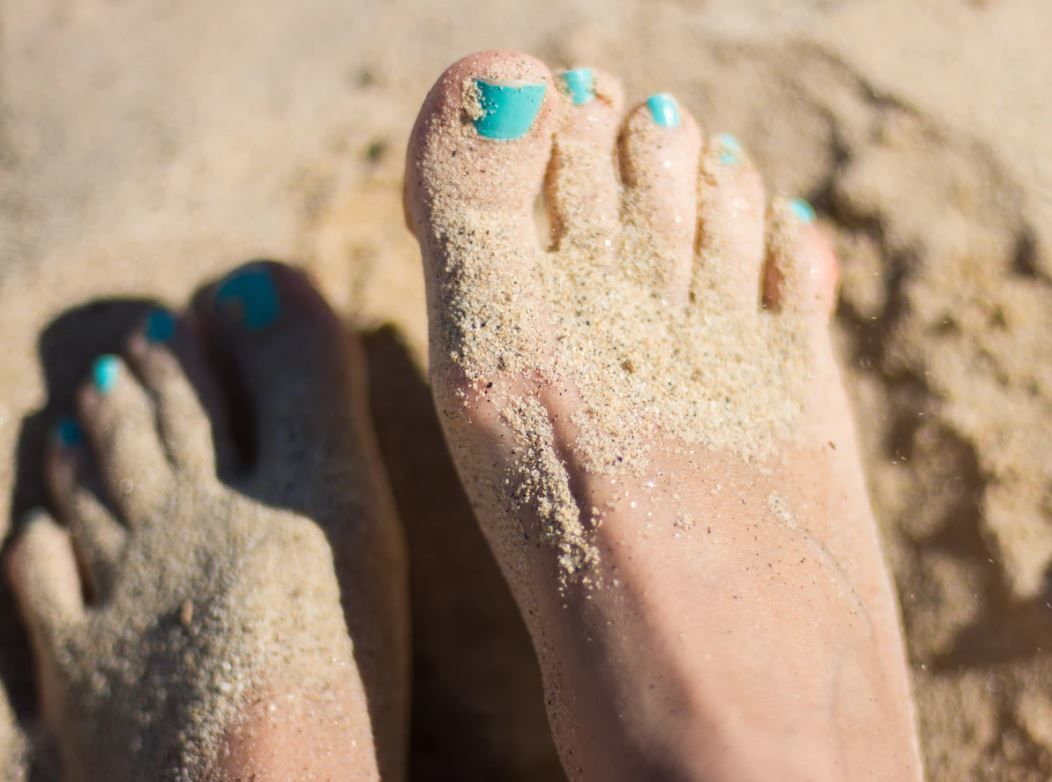During the COVID-19 pandemic, we are all spending more time at home. With this in mind, there are a few things you can do to keep your feet in tip top condition. We have listed a few of the key things you can do at home.
Skin Hydration
Your skin stretches similar to an elastic band. When fully hydrated your skin will stretch and rebound, but when your skin is dry it will split and crack. Splits and cracks are painful, and can become infected, with potential to ulcerate in some individuals. There are some simple steps you can take to hydrate your skin more, which include:
- Using a moisturiser every day. The type of moisturiser does not matter too much, the real benefit comes from the daily application. Use moisturiser on top and bottom of your feet and heels, but avoid rubbing between you toes, this makes it too wet.
- Wear socks and enclosed shoes. These items of clothing help to trap in moisture. They also aid in reducing friction , so can decrease your chances of getting blisters, while helping to keep your feet clean
Foot Hygiene
Just like the rest of our body, our feet like to stay clean. Dirt on your feet, in between you toes, or in your shoes and socks, can increase your risk of infections, friction areas (blisters), and poor odour. Most often people just let the water run over their feet in a shower, but there are some more things you can do to clean your feet:
- Wearing enclosed shoes and socks, these act as a barrier, stopping dirt from getting to your feet
- Use a face cloth to wipe between your toes. We don’t recommend doing this in the shower as you may fall over. Rather, sit in a chair and soak your feet in a bucket of lukewarm water, no longer than 10 minutes, and wipe your feet over while sitting.
- Remember to dry your feet, especially between your toes, after washing them. This will help to avoid skin damage and fungal infections such as Athlete’s Foot.
Calluses and Corns
Some people develop calluses on their feet. Calluses are hard skin that grow when too much pressure is applied to the skin, over time this can become painful. Calluses form quicker when the skin is too dry, or when you wear shoes that are too small or fit incorrectly. Tips to ease calluses include:
- Use a moisturiser everyday. If the callus is really thick, then a heel balm may be a better choice. Heel balms have a mild acid in them, which breaks the callus down quicker.
- Use a pumice stone, or nail file once a week. Using these help to rub the callus down, but slow and steady is the key. Do not file it all in one go, sometimes this can hurt. Rather, file a small amount regularly
- Make sure to wear appropriate shoes. Shoes that are too tight or the wrong shape will increase your risk of developing a callus

Shoes
When choosing a shoe, please consider:
- The right fit. A shoe should be slightly longer than your longest toe, and wide enough not to squeeze to tightly.
- A deep and roomy toe-box, your toes should be able to move and not be squished
- Fastening devices such as Velcro, laces, or buckles. This increases the support in your mid and rear foot. Avoid slip on shoes, they lack support, and are generally tighter around the toes.
- A low heel height, no more than 2.5cm is ideal.
- A good shoe should support and protect your foot while allowing natural movement during walking. Incorrectly fitted shoes can results in issues such as corns, calluses, bunions, increased falls risk, and foot pain.
- Avoid seams where possible, they increase risk of pressure and friction areas.
Slippers
A house shoe is preferable to a slipper where possible. Slippers tend to be loose fitting, increase risk of falls, and don’t protect feet overly well. If you choose to wear a slipper, then these are some considerations:
- You should replace your slippers regularly as they become worn and loose over time.
- Look for slippers that fit your foot, similar to how you fit a shoe
- Look for slippers with Velcro straps or some other fastening device
- One with grip soles
Of course, if you need any further assistance just call us, our friendly team of practitioners are on hand and happy to help.

